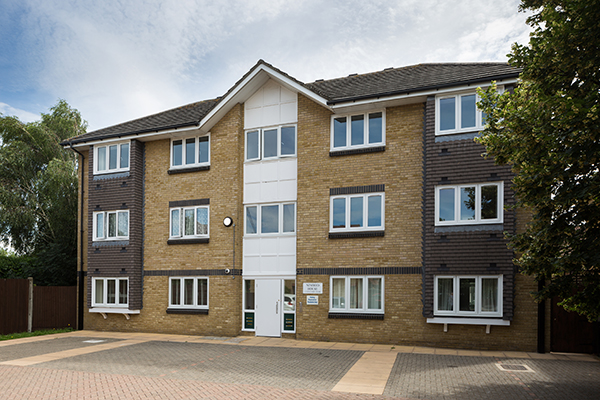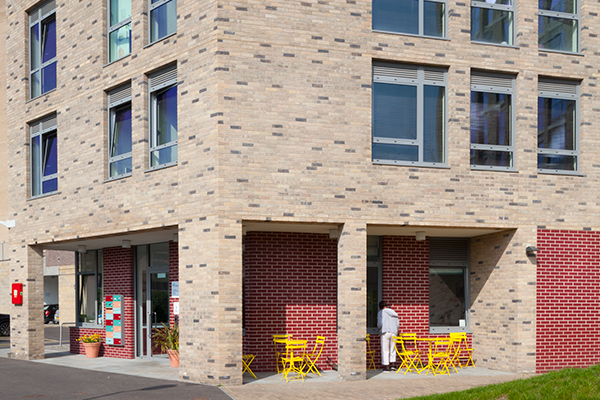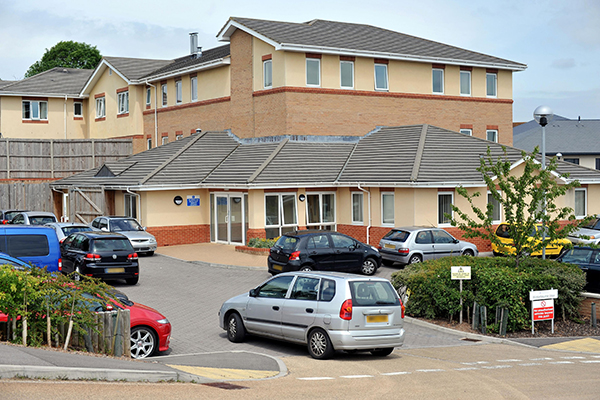You are viewing 1 of your 1 free articles
Helping people with learning disabilities return to their communities
The issues raised by a notorious abuse scandal in 2011 still need to be tackled. Beena Nadeem finds out how housing associations are stepping in to help. Illustration by Shonagh Rae. Photography by Richard Lewisohn and Press Association
Winterbourne View was one of the worst care scandals in recent history.
The private hospital, which cared for people with learning disabilities and autism, shocked the country when a BBC documentary secretly filmed the abuse doled out to confused patients.
The events that shook this Gloucestershire-based private assessment and treatment unit (ATU) in 2011 resulted in government investigations, commitments and promises that things would change (see below: After the scandal).
“There’s still more than 2,500 people living out of their communities and in hospitals, and there’s still no route out for those people,” says Alex Seery, director of care at supported social housing provider Look Ahead Care and Support, which owns and manages some 2,500 properties across London and the South East.
“When the government made these commitments, it probably didn’t realise the scale of the problem or the scale of property required, and that meant the progress was slow,”he says.
This is where housing associations are stepping in and providing a viable, safe alternative to ATUs which gives residents the option to be housed close to their families and within the communities that they grew up in.
One of these housing-led projects is set in an east London housing estate, just behind the busy A13 road. Despite the road, Nimrod House is surprisingly sedate. Its lush green garden, complete with swing chair, bike sheds and an industrial-sized trampoline is a stark difference to what its residents had known before – an ATU, some 60 miles from home, in Colchester.
Nimrod is made up of five single room flats, with kitchens and living areas, adapted for each resident. Referrals and clinical needs are delivered through a partnership with Newham Clinical Commissioning Group and the local authority, and this includes access to clinicians, psychologists, psychiatrists and social workers who work with the residents to meet their needs.
“Living here represents huge savings. We’re not-for-profit, so any money goes back into the service which means a much better outcome for people here,” says Mr Seery.
“When the government made these commitments, it didn’t realise the scale of the problem.”
Although Look Ahead will not disclose amounts involved because of commercial sensitivity, it says the cost of its first resident, Anwar, is 17% cheaper than a high-security hospital placement.
Anwar, who’s in his mid-30s, moved here in April 2016 when Nimrod opened. A glance at his timetable shows a week spent swimming in the local pool, going to the mosque, shopping and music classes. Thanks to Nimrod’s support workers, he has learned how to do his own cleaning and, with their help, shopping, and navigates his way around London by bus.
“If someone is admitted to hospital during a period of crisis, they may find that on release they’ve lost their home, leading to what becomes a spiral of worsening care for them. Here they will always have a home and security of tenure for as long as they need it,” says Mr Seery.
Nimrod House in Newham, London, offers five single room flats with kitchens and living areas that are specially adapted for each resident
So why are more housing associations not offering what seems to be a cost-effective, sensible and life-affirming solution?
“The margins are low in providing this kind of care and for some people who have challenging behaviours, and need many staff, the margins to make money are very small,” says Mr Seery. “Some residents may become challenging and, for some providers, it’s not a reputational risk worth taking”.
He adds: “Businesses are saving and not spending, and if that placement is not going to work, and they invest their own capital, then they have lost a lot of money.”
Anwar’s mother, Samina, says that during his time here Anwar has transformed. “He had been in a lot of placements before… and was stuck in the system for six years. He was so withdrawn, but now he tells me everything about his day,” she says.
A very non-withdrawn Anwar bursts in wearing a huge grin on his face. “I’ve been CD shopping. I love 1980s music,” he says, showing he is a fan of music from Abba to jazz. He spills out tales of a recent late return after spending the day with his family. “We didn’t get back until 10.30pm.”
Upstairs Anwar shows me around his flat. It is a bachelor pad: flat screen TV, CDs, pizza in the oven and a prize pair of Adidas joggers strewn across a surprisingly non-bachelor-like well-made bed.
Across town, One Housing Group (OHG) runs a similar project called Tile House, which it claims to be the only truly integrated approach to providing alternatives to ATUs.
As part of the 2012 King’s Cross regeneration project, it used Section 106 funding to build 15 self-contained, one-bed flats.
What makes it different from other projects, One Housing says, is its approach to “truly integrated care, linking clinical input, housing-related support and housing” in a model which, it adds, sets it apart by delivering full-time care on site.
London’s Tile House was built using Section 106 funding
“We have a full-time NHS care co-ordinator, effectively a nurse, who can call on a doctor, occupational therapist and psychologist that are part-time but part of the defined team.
“Plus we have our own in-house clinical support team, who are gaining mutual benefits with their NHS colleagues by working alongside each other,” says John Hoar, head of health partnerships at One Housing Group.
Most offerings, he adds, involve “a separate contract team, who drops in, but they are not part of one integrated team”.
“He was stuck in the system and so withdrawn. Now he tells me everything about his day.”
Schemes like this can help tackle people who are ‘bed blocking’ in ATUs in areas where it develops such accommodation, usually after they have being readmitted for rehabilitation. Schemes involve zero risk to trust or commissioners and effectively ensure there is somewhere people can move on to.
For models such as Tile House to work, clinical confidence is critical. “That comes from a proven track record like Tile House but also letting clinicians see the model in action,” says Mr Hoar.
OHG is in discussions with four NHS trusts to further roll out the model in London and the South East.
Tile House has saved money. Compared with customers’ previous placement costs, it has managed to reduce in-hospital admissions from 408 weeks in the two years prior to the move down to 57.7 weeks.
Golden Lane Housing (GLH), set up by learning disabilities charity Mencap in 1998, has some 800 properties dispersed throughout England, Wales and Northern Ireland for 1,645 tenants in the community and has funded properties by raising charity bonds amounting to £30m in recent years.
Alastair Graham, director of GLH, says: “It’s about clinicians having the confidence to see that those individuals are OK to be looked after in the community. Some have become institutionalised so having confidence that community-based housing can work is important.
“Commissioners and clinicians need to see it can work with those patients needing higher levels of support, showing that people with quite challenging behaviour can be looked after in the community with better results; they are often less stressed and this results in less challenging behaviour.”
However, for some like Davina, whose son Joe – who is in his mid-20s – lives in Nimrod House, community-based settings have significant pitfalls.
In the past Joe, who is on the autism spectrum, has self-harmed and hurt those around him. However Joe, who has lived at Nimrod for the past year, rarely leaves his flat. He has 24-hour support, no restraints and Davina is always consulted about Joe’s care.
Davina says: “They’re really trying at Nimrod but it’s been very difficult for them as I don’t think they were prepared for someone like Joe. With all the good will and intent, Joe won’t go out with them; he’s not going out anywhere.”
She adds that in Colchester ATU she was able to take Joe out for long walks, but in London it is impossible, “because it’s so built up; it’s hard for him”.
She adds: “They take these people and clearly can’t cope with them. Being in the community might not be the best place for some – they need the right community, not just a community for the sake of it.”
In response, a spokesperson from Look Ahead said that the organisation "takes care to work with our customers, their families and clinicians where relevant, to ensure we provide the best possible care in the most appropriate setting. We provide a rigorous and regular training programme to ensure our staff have the skills to effectively engage with our customers and deliver their care and support."
The names of those interviewed have been changed
After the scandal
Winterbourne View (above) opened in 2006. At the time, the 26-bed hospital had a turnover of £3.7m a year. The average weekly fee for a patient was £3,500. It took NHS-funded patients and closed in 2011.
Transforming Care is the government’s agenda to shift the way care is provided, and includes closing private hospital units and funding moves to community services. All those inappropriately housed in assessment and treatment units were meant to have moved back into the community by June 2014 under this pledge.
But in 2015, the Learning Disability Census found about 3,000 patients receiving in-patient care – roughly the same number as in 2011.
Two years ago, the government updated the Transforming Care agenda again, making a commitment to close up to half of the 2,600 hospital beds for people with learning disabilities by 2019.
NHS England has stated that each ATU bed costs around £175,000 per year, with three-quarters of patients having been there for more than a year. These are supposed to be short-term assessment places.
According to the Centre for Disability Research at Lancaster University, the government spent £477m last year on keeping 2,500 people with learning disabilities and autism in hospitals, with more than half of those in beds provided by the private sector.
Update: at 4.00pm, 29.11.17 This article was updated to add a response from Look Ahead to criticisms of the care given to one of the residents.












